Home » Posts tagged '#edchat'
Tag Archives: #edchat
Virtual Field Trips with Google Cardboard
Google Cardboard is an affordable virtual reality viewer. The sets are typically made out of cardboard or plastic, keeping them cost-effective and easier to use in classrooms. By sliding a smartphone that has the Google Cardboard app installed into the headset viewer, users can experience a 3D virtual reality at a low cost.
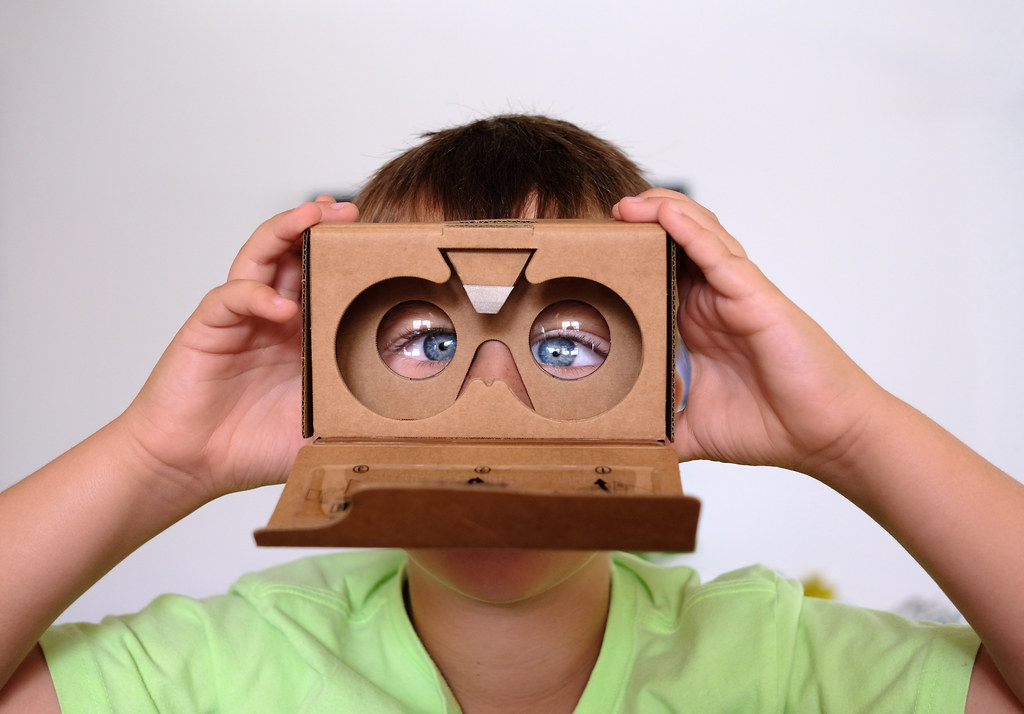
Using Google’s Arts and Culture Expeditions, students can use their Google Cardboard headsets to take virtual field trips to a variety of places. The tool allows you to choose from five different subjects; Science and Technology, Arts, Geography, Natural History, and History. For this post, I’ll be discussing a virtual field trip that is useful for history classes.
There are multiple topics under the history tab from ancient history to Black history. By clicking on the Egypt option, viewers can take a 360-degree tour of the Pyramids at Giza. Each slide gives a brief description of the history.

After touring the pyramids the expedition moves on to teaching about The Great Sphinx. These slides give a history of The Sphinx and some fun facts as well as a 360-degree view of the historic site. Following these slides, a brief overview of the Mastabas, the structures used as tombs for nobles located near The Great Sphinx, is given as well as a tour of them.

Many other important historical locations throughout Egypt are shown in this expedition including the boat pits located at the bottom of the Khufu’s Pyramid, the Causeway, and Cairo.
On the main page for the Egypt expedition, there are even more stories to be found including Myths and Heroes and The Curse of Pharaoh Tutankhamun. Below the stories collection is 8,910 items that students can view to explore Egypt even more in-depth.
These expeditions with Google Cardboard are a great way to give students a new view of history. The tool allows them to step into the location or the time period through virtual reality, giving them a better understanding of the subject. Using Google Cardboard to teach students about the culture and rich history of regions all around the world can be made easy with the use of virtual reality.

Thank you for reading!
Samantha Pollina
Out of Eden & Into the Classroom
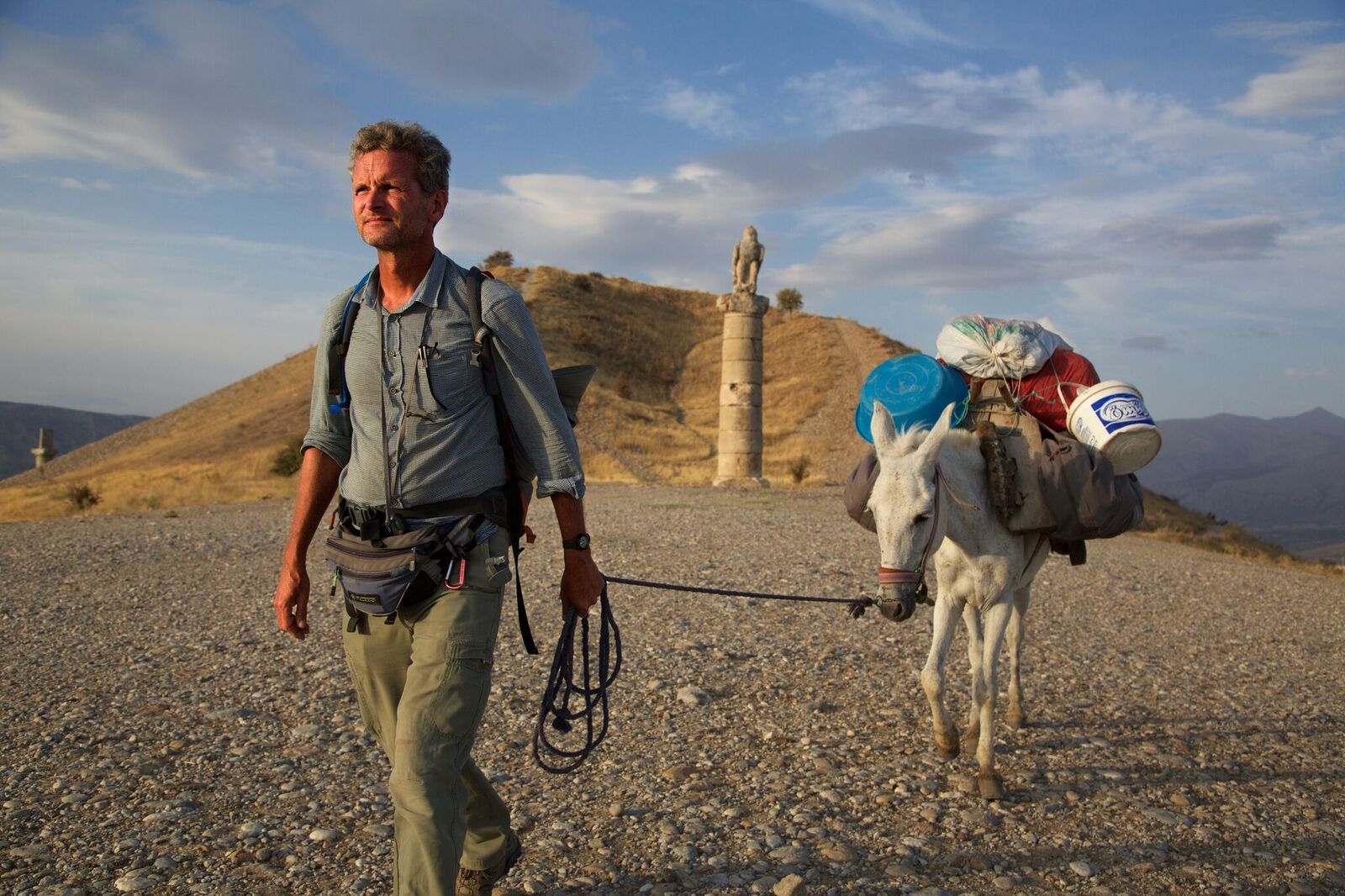
Before visiting this website, I had never heard of the Out of Eden Walk, and I am honestly surprised considering how much of a feat this is. A modern day Odysseus, Paul Salopek is currently on a 24,000-mile odyssey from Africa to the southern tip of South America. It is special because he is following the path our ancestors made as they migrated across the Earth. Along the way he is covering the major stories he encounters from the eyes of the people I didn’t even know existed. From climate change to technological innovation, from mass migration to cultural survival, Salopek is giving voice to the people who inhabit the places he is journeying through every day.
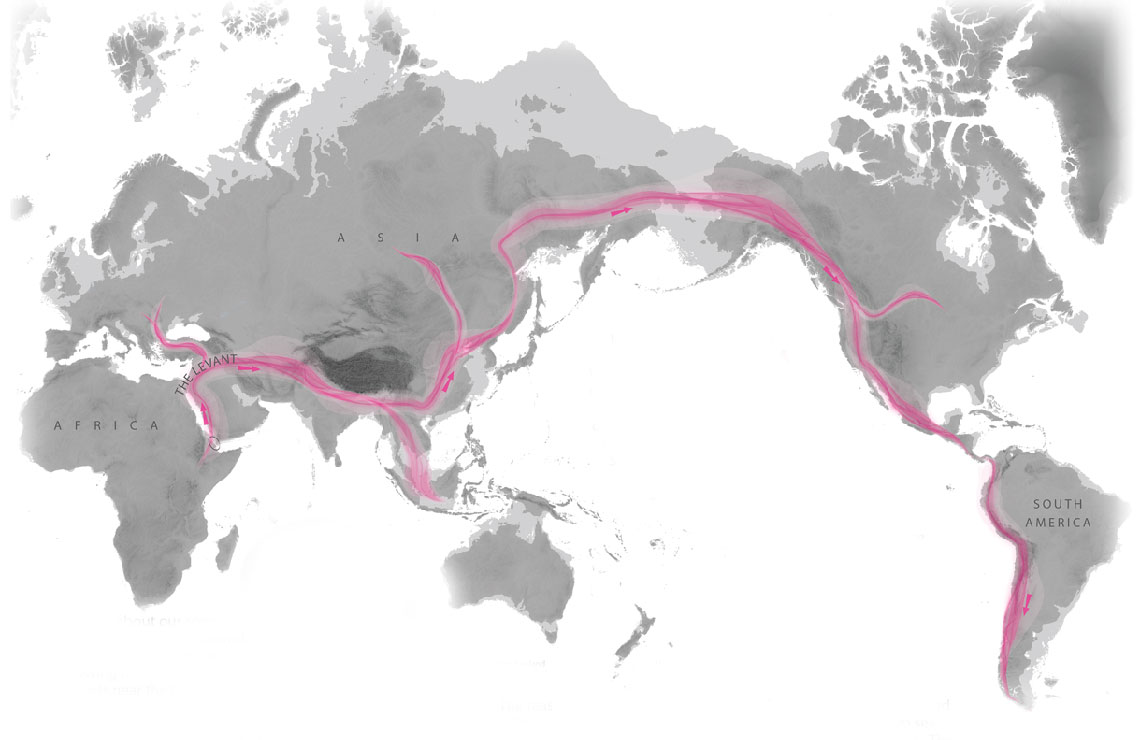
Walking for several years now, Salopek has obviously been to many places. Alongside gaining popularity for this odyssey, he has also inspired educators across the world to teach globally. As a future teacher, I am going to have the task of teaching students about the world ahead of them, and that means more than just learning about their city, state, or even country- it is about teaching that the world is way larger and has so much more to offer than what is on TV or in the news. So much of today’s society is based upon quickness and cheapness, rather than time and quality. Paul Salopek can simply visit big named places in each of the countries he visits and be done in a few months. Instead, he is emphasizing the slowness of it, which really brings meaning to his work and allows for those genuine human interactions. In this blog post, I am going to talk about a few of the place’s Paul has been to.
The first stop for us is the most recent one for Paul: The Gaoligong Mountains, in Yunnan, China.
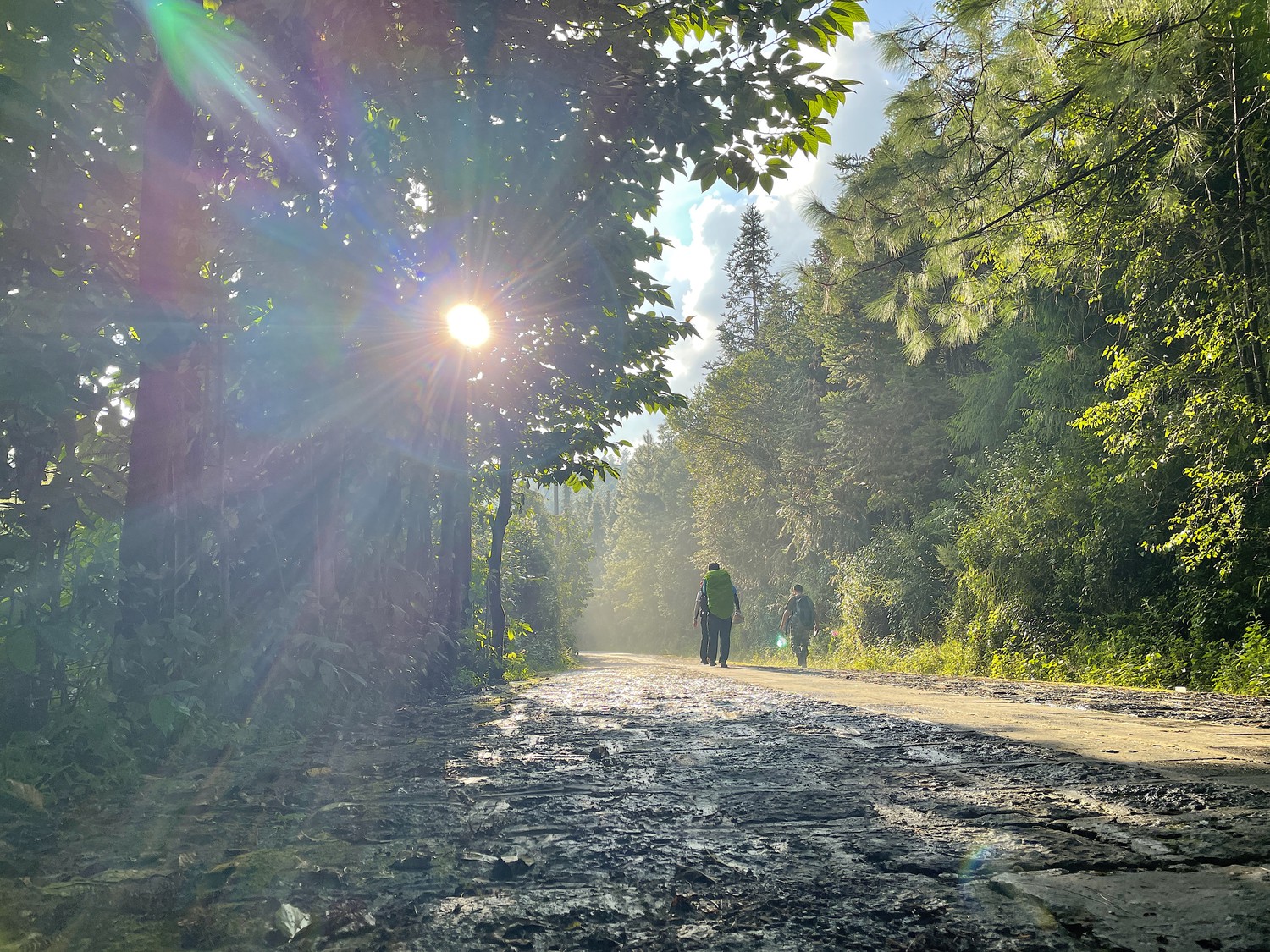
According to Salopek, around 5,000 species of plants, around 700 species of animals, and 1,690 different insects find refuge in the mountain range. One of his guides says the forest floor was so covered with salamanders, the only way he could leave the forest was by walking through creeks. These places are untouched by technology and because of that are often overlooked. That is no problem for those who inhabit areas near the mountain range, in fact, they prefer it. An administrator of the mountain range spoke with Paul and explained there is a saying that goes, “You cut my trees? I cut your hands”. They are very passionate people and have the utmost respect for nature, something that we should all learn from and admire. Yang Xue Liu is a 74 year old man Paul encounters in a village in the mountain range. He sells medicinal herbs and each one has its own purpose. He explains that if people knew plants, they would use them and that is something very important in a science classroom. A teacher could give a whole lesson on plants or nuts that are safe to eat, which can help students learn how to use the environment around them and not always rely on processed food.
The next stop is a step back into time for Paul, but a new future for me and those alike who have no idea a place, named Baku, Azerbaijan, exists.
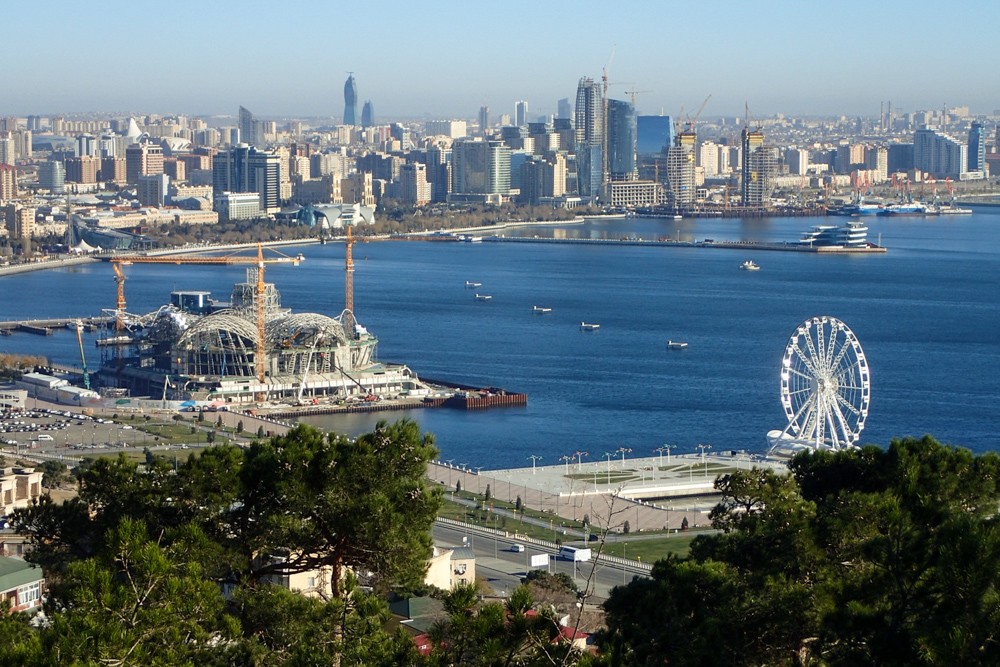
Baku is home to many different empirical influences, from Russian to Persian, Ottoman (Turkish), and even British. It is also home to apparently the world’s largest KFC: a fact I did not ask for, yet did not know I needed to hear. This city has a reputation for taking in widely different influencers and somehow manages to create its own spin on it. This kind of city would be great for a social studies or history class, as it is proof that we live with history everyday. Paul links a walking tour of the city that I think greatly shows the user just how diverse and culturally rich this city is.
Continuing with the theme of being unexpected, the last stop in this blog is where Paul Salopek started, Herto Bouri, Ethiopia. It is interesting to read what expectations he had for his journey, and how excited he was. Salopek in 2013 predicted to be in South America by 2020 and it is crazy to think about how much of the future is unknown especially writing this blog in 2021 dealing with the Covid-19 pandemic. His journey beginning reminds me of beginning school for the first time as a 6 year old. Like Paul, I had no idea of the journey I was in for, and I still do not now. Just as my parents and other adults have done before me, I walked through school everyday, enjoying the ride and discovering new things about myself and others. Now, on the cusp of ending my school career as a student, I begin a new walk in school, as a teacher. Like the guides that help Paul on his journey, I too am now a guide for the students who are now where I once was. Keeping him and his journey in my thoughts, I will use this Walk of Eden as a teaching point about the globe, but also one about ourselves. A quote by a fifth grader in the U.S.A. about the Out of Eden project really sums up the importance of this project: “I think when exposed to the details of others’ lives, you start noticing your own…”—Annie 5th grade student, Massachusetts, USA.
Out of Eden Walk
In 2013 Paul Salopek began his journey, traveling in the paths of ancient migration patterns, titling it, The Out of Eden Walk. He documented his travels through writing, video, audio, and pictures. Every 100 miles he marks his recordings. In this post, I will discuss three of the locations Salopek documented.

Salopek began his journey in Africa, in the Ethiopian Rift. He provides a panorama view of his first milestone, showing a group of people, a vehicle, and the desert. Idoli Mohamed, an Afar pastoralist is the first encounter he writes about on his journey. He asks him three questions; who are you, where do you come from, and where are you going? Idoli answers he is a pastoralist however, he doesn’t want the same life for his children. He would prefer for his children to attend school. Idoli explains people say the Afar people are from Tadjoura, Djibouti. He says that if they can be educated they could go anywhere.
At every milestone, Salopek takes a picture of the earth and the sky. In his first milestone, he shows the pile of goat dung he stands on at mile 0 of his journey and the sky, showing how bright the sun is, describing it as a “blast furnace.” Even in the picture of the sky, it’s easy to see that there are very few clouds and there are no trees for shade. This shows how brutal the conditions are in the area.

On day 654 of his journey, Paul Salopek is near Mt. Subhan, Turkey. At this point, he has traveled 2600 miles. He wrote Mt. Subhan is an extinct volcano, “it’s cone arrowed 13,000 feet into space and was very stormy. You rarely saw the summit.” The panorama shows green grass-covered hills, their cargo horse, and his traveling partner. While there are some clouds that can be seen in his panorama, none are seen in his earth and sky picture, again showing how brutal the sun is.
Salopek encounters two young boys, Yusef (14) and Eyep (15). He asks the boys the same three questions; who are you, where are you from, where are you going? Eyep answers for both of them, they are cousins from Turkey, he wants to be a teacher and Yusef wants to become a geological engineer.

Milestone 74: Every Story Contains Silences
Milestone 74, 3184 days and 7550 miles into the journey, is Salopek’s most recent milestone, posted on October 26, 2021. In the introduction, Salopek explains that he had to put the trek on hold for 20 months due to the Covid-19 Pandemic due to closed borders. He explains that crossing the border into China became completely impossible when Myanmar’s army took power in a coup. In order to continue his journey, he needed to take a plane into China. This means he skipped 251 miles, and two milestones.
At this milestone, he meets flower farmer Jiang Ji Bing. Again, he asks the three questions. Jiang Ji Bing answers that he plants flowers that are used for medicinal purposes, he is from Tengchong, and once the flowers are picked he is going back home.
Jiang Ji Bing’s flower farm is pictured in this milestones panorama, as well as mountains and buildings. In the earth and sky pictures, Salopek is standing on a partly paved path, much different than the previous two milestones discussed in this post. This shows how different each area he visits is. Some are completely barren, some are in the middle of nowhere, and some are in the middle of cities or farms.

The Out of Eden Walk is a great resource for students. This could be used in a history classroom to discuss ancient migration patterns. The documented journey is also great for showing students the diversity of the world through people, cultures, and environments. Paul Salopek showcases his journey in a way that focuses on archaeology, culture, environments, and more. This is an important resource to educate students on the social and ecological aspects and difficulties of different people around the world.
The site also features an “In the Classroom” tab which provides resources for students and teachers about the Out of Eden Walk. It offers resources from National Geographic, the Out of Eden Walk homepage, and the Pulitzer Center. These sites provide outlines, lesson plans, and educator notes.
Below is an introduction video posted on Vimeo for the Out of Eden Walk.
Thank you for reading!
Samantha Pollina
WE Can Change the World
When people have ideas to make the world a better place, most of the time if they are not wealthy or have a position of power, their idea never takes off the ground. That all changed with WE, an international charity that empowers people to make the world a better place. So far some of their accomplishments include giving over 1 million people access to clean water and sanitation, 200 thousand children education, and over 14 million dollars fundraised by students supporting local and global issues.

One of the main focuses of WE is in the educational field, specifically supporting teachers with free resources to help empower their students. They have multiple modules that teachers can access through their WE Schools website, which allows anyone to sign up and use their resources with no cost. Thye partner with OneNote, a popular note taking program that I showcased during this screencast. Below is an image of the introductory page to WE Schools, which outlines their mission as well as the features they have.
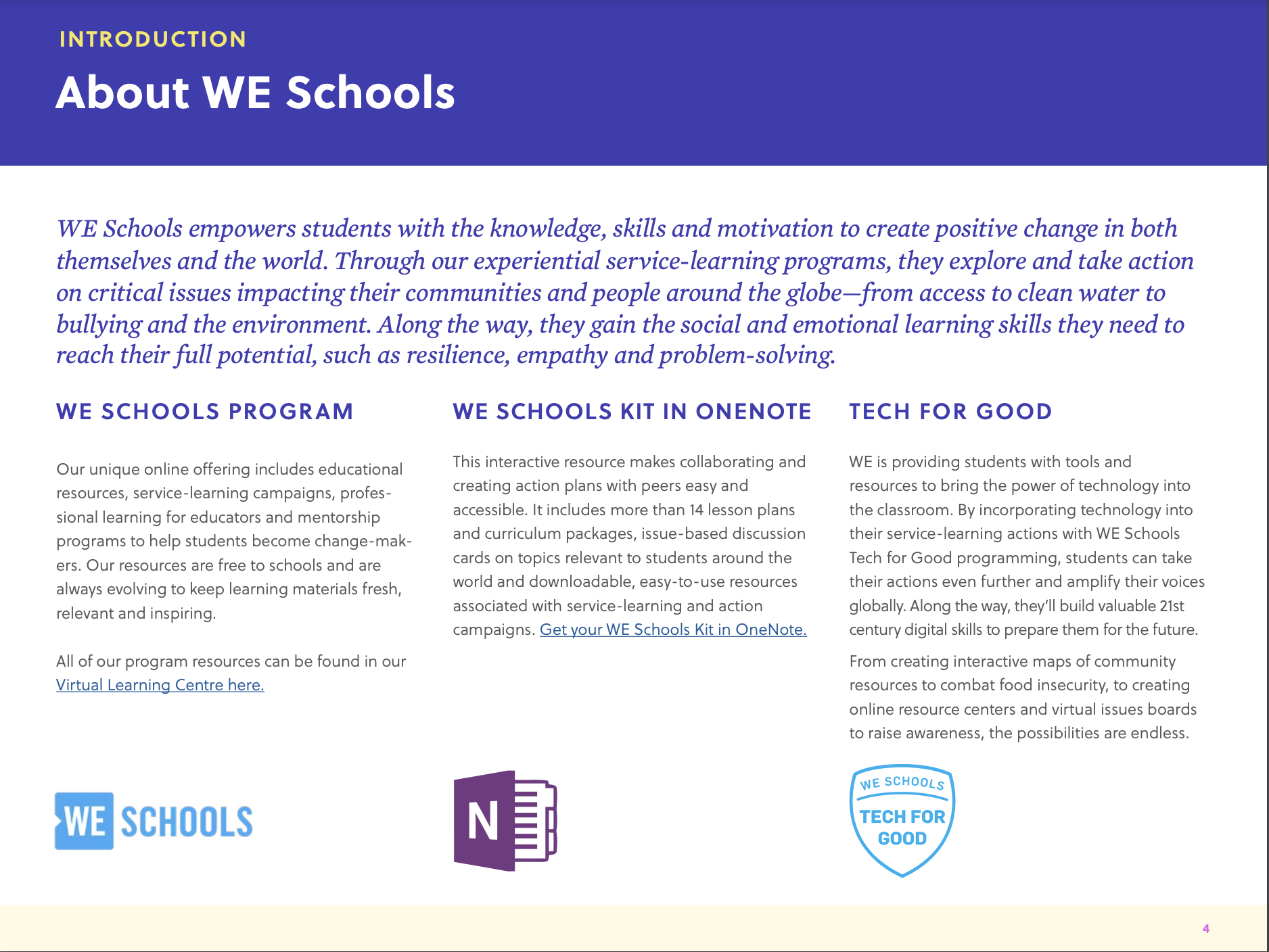
The tool that stuck out to me was the WE Schools Foundational Module, which helps teaches foster a safe and inclusive classroom. Educators talk a lot about how important it is the be inclusive and the benefits of it but sometimes fail to give actual strategies. This module gives tips on how to be supportive, as well as 5 lessons on how to create a caring classroom. For teachers who may struggle with coming up with ideas, this module is the perfect starting point to change their classroom for the better. On the other hand, for teachers who may have become indifferent of students or fail to make changes in their classroom, this module can help them come to understand the importance of inclusion and how WE is helping ensure its success.
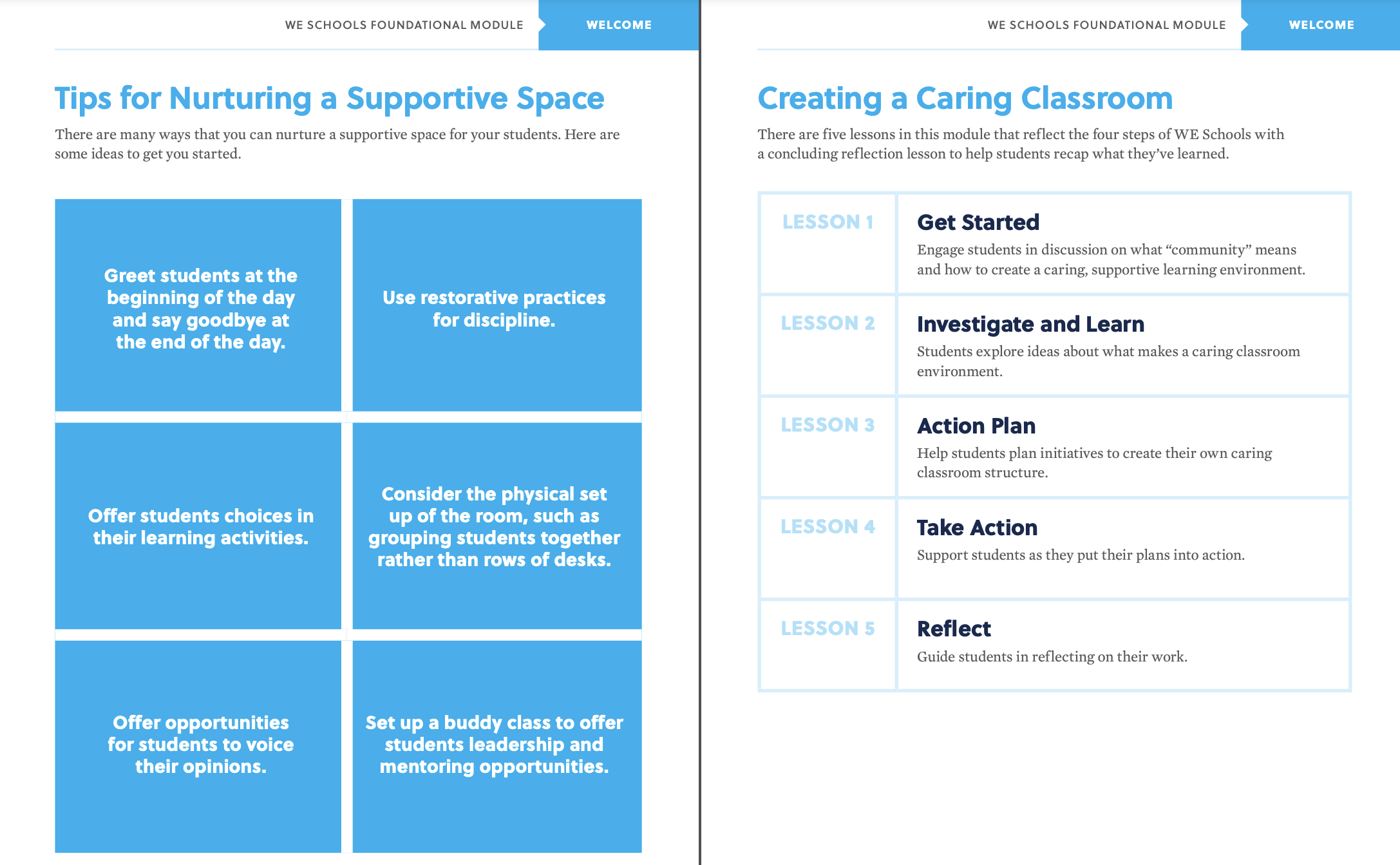
The WE Charity exists to only help make the world a better place and students in our schools are the future benefactors and contributors to it. As a teacher, it is our responsibility to help foster inclusion in our classrooms; the foundational module is where it starts.
WE Are Silent: Teaching Children’s Rights
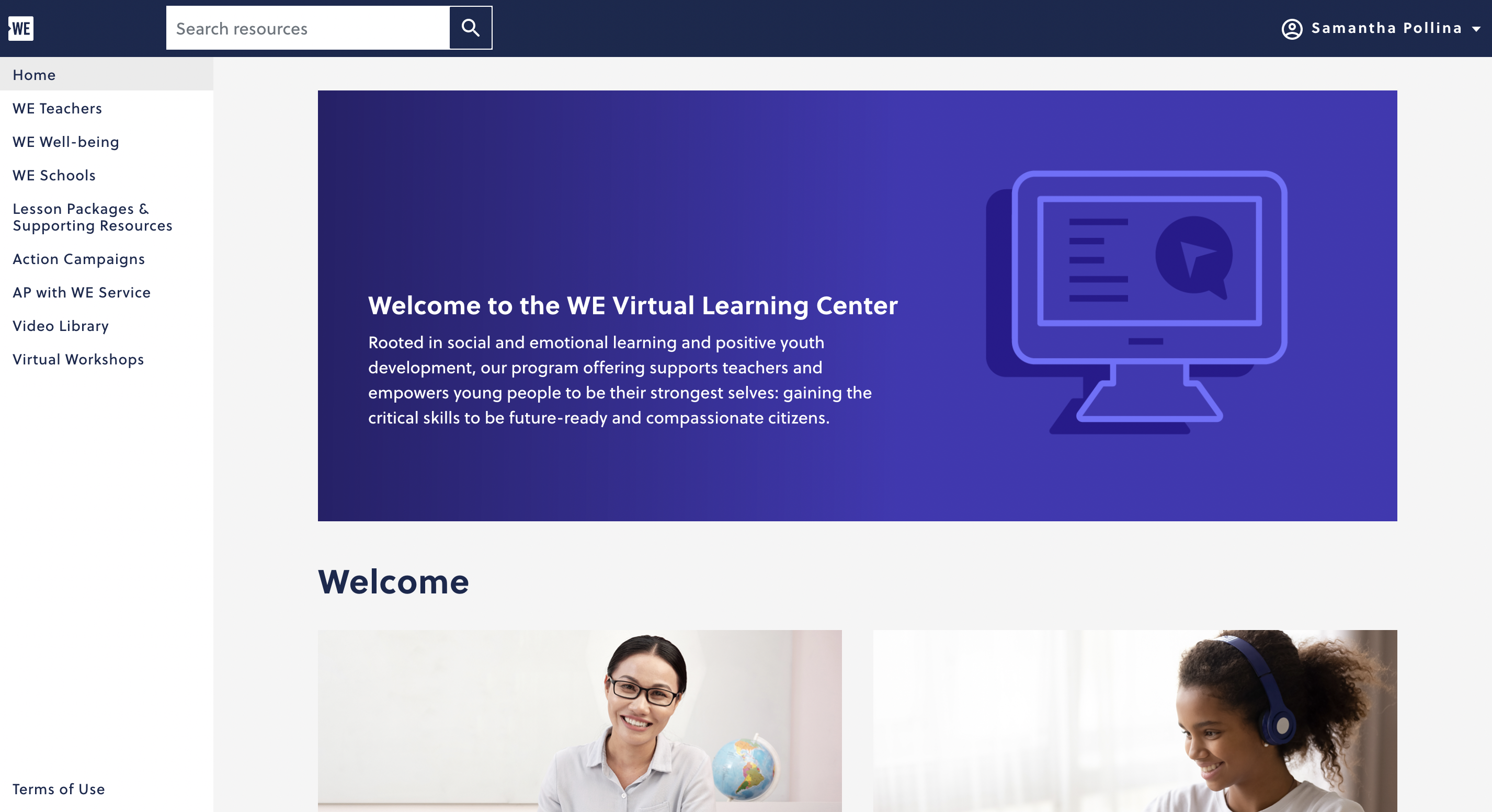
This week I took a look at WE.org, a website that provides resources and campaigns to change the world. It provides not only campaigns and volunteer work for anyone who wishes to become involved in bettering the planet, but also educator resources. Using the WE Virtual Learning Center teachers can locate lesson plans and other resources that focus on educating students on ways to promote a healthier society.
Through this website, I located a great lesson plan to utilize in a high school Social Studies classroom. The lesson focuses on children’s rights. The resource provides multiple days of plans, however, I will be focusing on Lesson #3. This lesson allows students to become aware of the denial of rights to children globally and how to become an advocate.

The lesson begins by telling the story of Malala Yousafzai, a young girl from Pakistan who advocates for the educational rights of girls. The plan provides a video as well as multiple questions to use for class discussion. This will provide students to share what they have learned so far, their point of view, and ask any questions they may have.

Next, the class will be divided into groups and provided a sheet of chart paper. Each group will answer the question “How are children and young people denied their rights?” The groups will then write constructive feedback on each other’s charts (using different colored ink).

The class will then discuss their charts and what the other groups wrote on their charts. Students will then provide an example of children being denied their rights and how they could become an advocate for those children. This will assess the learning of each student.
This lesson plan provides students with knowledge of children’s rights and advocacy. It also teaches them about the story of Malala Yousafzai and Pakistan. Students will be able to display their ability to write coherently and determine the meaning of words and phrases. This is a great lesson to use in a high school Social Studies class that teaches students about diversity and human rights as well as tying in the Sustainable Development Goals.
Thank you for reading!
Samantha Pollina
Hyperdocs
Hyperdocs are a great addition to any classroom because it offers a world of opportunities for the teachers and the students. Hyperdocs are an interactive document that the teacher can share with the student instead of handing out plain worksheets. They allow for students to explore technology while also learning the content. I explored a Hyperdoc to learn more and find out how it can improve my future classroom!
I explored a Hyperdoc pertaining to a Kindergarten history lesson (since this is the grade I aspire to teach). It was very simple, but would be very fun for the kids because it is interactive.
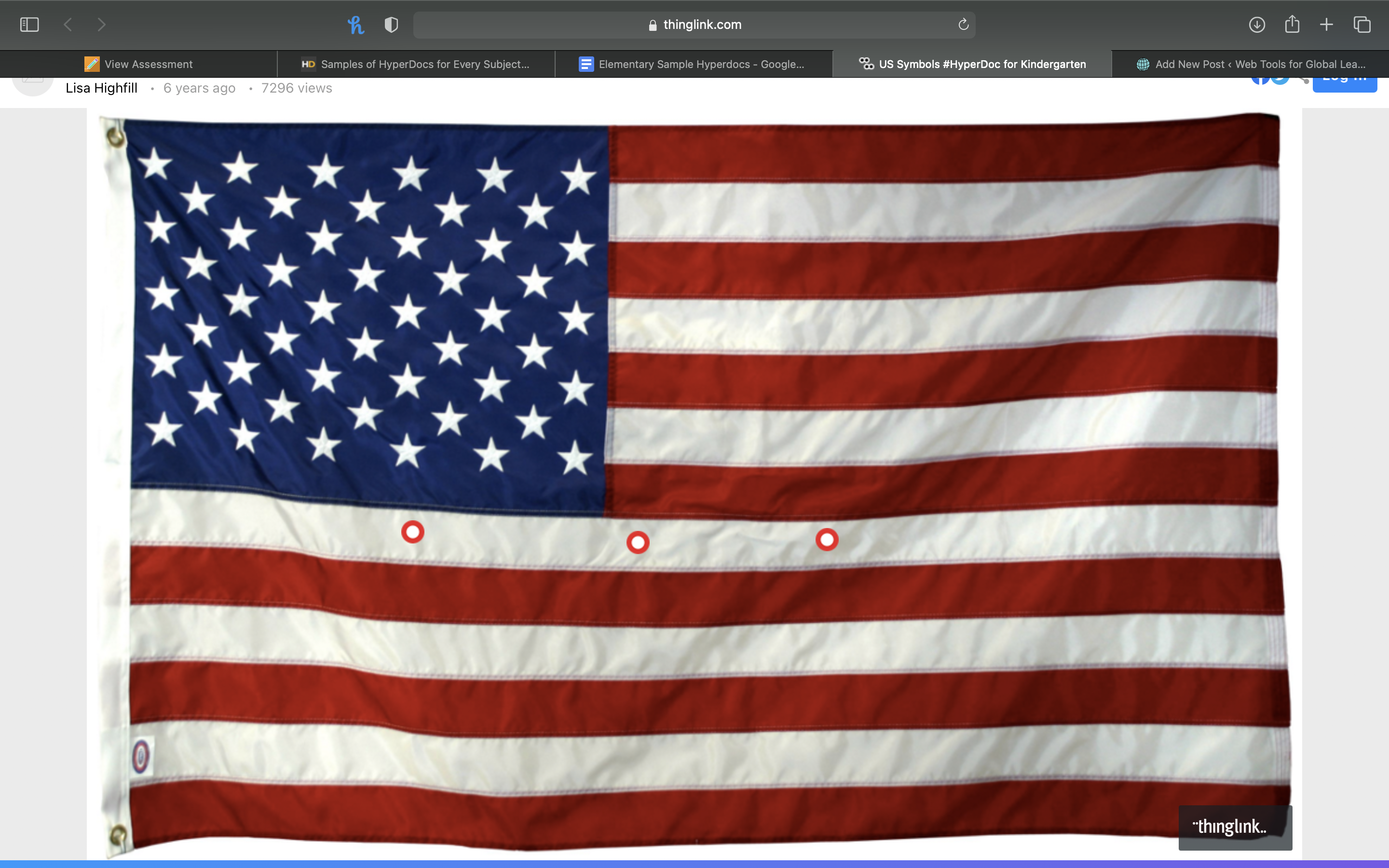
There were three links attached to this document. The first link was a video for the students to watch about United States symbols. Next was a slideshow briefly explaining the symbols discussed in the unit. The last link was a link to ABCya paint where students were asked to paint their own flags.
Hyperdocs can be used for any age level, another reason they are so great! They allow for students to explore by themselves, with peers, or with the help of their teachers to learn a variety of things. Hyperdocs can be used from any subject to even community builders. I encourage all of you to use hyperdocs in your future classrooms!
Thank you for reading!
Jillian DeMore
@DeMoreJillian
Hyperdocs for History Classrooms
A HyperDoc is an interactive tool, typically a document or slideshow, that consists of multiple links, videos, and assignments for students to complete. The assignments will be based on the links the students follow or the videos they watch. The assignments can even be links to a separate document for students to type their answers in, or another collaborative tool, such as Padlet. Hyperdocs are engaging, interactive, and inspiring for student education, by allowing them to take control of the lesson rather than sit by and listen.

A great example of a HyperDoc for a history classroom can be seen in this Enlightenment Google Doc. This was found on the HyperDoc website. The document starts out by giving a brief overview of the topic.
Then, students are provided with this sentence, “Je pense donc je suis,” and are asked to translate, find the author, and write a short paragraph about what they believe it means in the provided Google Form. This allows students to practice some research as well as answer questions in a collaborative space. The HyperDoc then gives students a link to a video on The Enlightenment and asks them to take notes.
Students are then asked to fill in a 3-2-1 chart based on what they have learned so far through these assignments. The first section asks for three things the student has discovered, then two interesting facts or details, finally the students ask one question. This allows students to create an outline and think about what they have gone over, what they enjoyed, and think about what they’re still not fully understanding.
Next, students are instructed to go around the room and fill in the chart for each respective philosopher. While this would include some classroom setup, this section could be edited to fit your classroom style and needs. Teachers could even set up their own Google Doc with those philosophers and provide the link in the given space within the HyperDoc.

Students are then asked to show what they know using ClassTools to create a “breaking news” headline for whatever contribution by philosophers of the time was important to the Enlightenment. This allows students to look further into the topic and pick out what they think are the most important aspects. It also allows for some creativity! Students then share their headlines in a collaborative Google Slide presentation.
Finally, students are asked to reflect on what they have learned about The Enlightenment through the HyperDoc by answering a question, “do we need government.” This allows students to look back on the notes they took and answers they provided, as well as think deeper about the topic, time period, and philosophies.
Additionally, students are provided with a link to a TED Talk titled, “The Long Reach of Reason”. This TED Talk discusses how reason has impacted people’s lives as well as how it will continue to do so. This allows students to see the impacts of reason in real-time, similar to the impacts of reason during the Enlightenment. This will provide students a better understanding of the subject and keep them interested in the topic.
Making a HyperDoc is easy and a great way to get students involved in interactive and engaging lessons. HyperDocs create a memorable assignment for students that allows for creativity, collaboration, and inspiration. For more information on how to create your own HyperDoc watch the video below.
Thanks for reading!
Samantha Pollina
Virtual Field Trip: The Louvre
With The Louvre’s virtual tours page, anyone can admire the beautiful galleries from the comfort of their own home, completely free.

The site allows you to travel through the museum and even click on the art for a better look and to read the plaque for each exhibit as if you’re truly there (with much less of a crowd). The website offers multiple virtual tours such as The Advent of the Artist which features works by Delacroix, Rembrandt, Tintoret, and more. My personal favorite virtual tour is titled Founding Myths: From Hercules to Darth Vader. This exhibit, with vibrant colored walls and even more stunning art, depicts how various artists around the world have created works inspired by myths.
The Louvre website also offers virtual activities for adults and children. There are podcasts, events, and historic cartoon videos for children.
Below is a video posted by the Musée explaining the history behind the building.
Thank you for reading.
Samantha Pollina
Come with me on a Virtual Field Trip!
This week I took a virtual field trip to the Coral Reef in Panglao, Philippines.
I chose to go on this trip because I love the ocean and admire all of its beauty. On this trip, I was able to look at all the different kinds of fish around me. I could zoom in to catch a closer look. I could also look up to see the sun shining down on the ocean water. When I looked down I could see the reef beneath my feet.
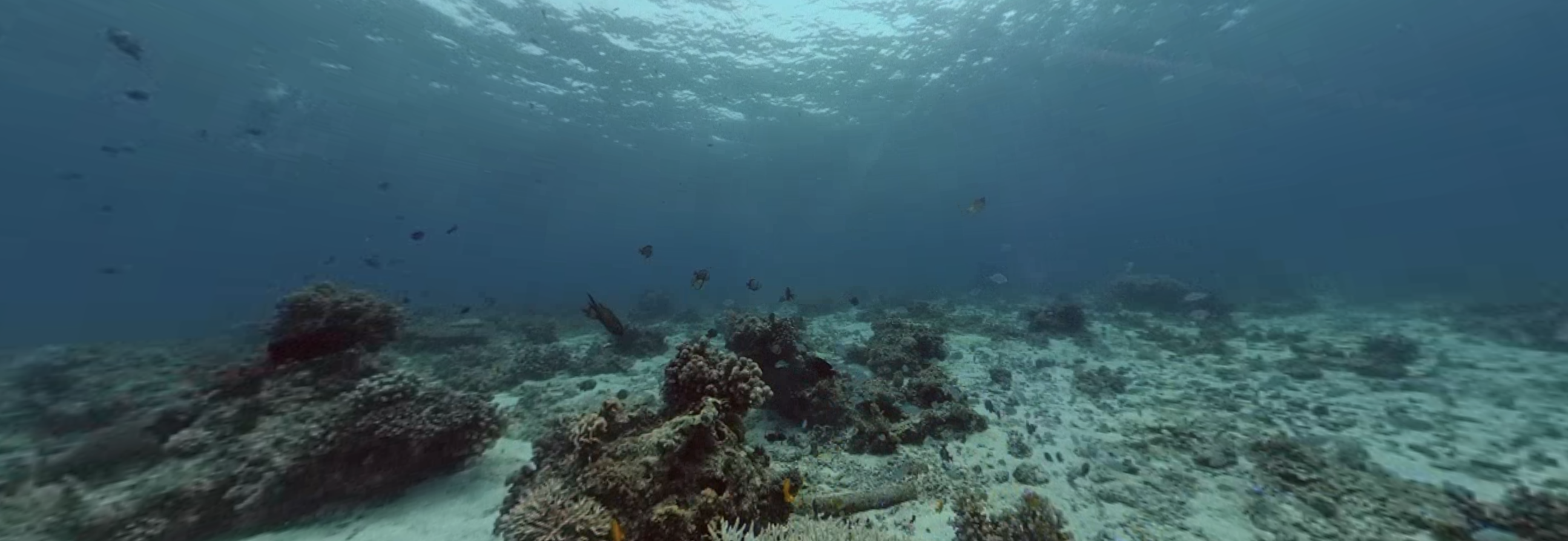
There were a bunch of different view options for the video. This helped me see the Reef in so many different ways. I was truly amazed at how clear the videos were.

Virtual field trips are an amazing way to show students in the classroom different places all over the world. This will keep them engaged and excited in class when they see the variety of places they can go!
Thank you for reading!
Jillian DeMore
@DeMoreJillian
A Trip to the Louvre

In 2018, I studied abroad for my first semester of college and I took a trip to Paris for a weekend, with one of my stops being to the Louvre. We did not choose to go inside due to the amount of people in it, so I decided a virtual tour would complete my experience there.

Looking at the tour options, the last name I expected to be on there was Darth Vader, the iconic bad guy from Star Wars. The exhibit was on heroes and monsters from folk tales and myths throughout history. The design of the gallery was to invoke tension, conflict, deep thought, and a sense of rising to action, all aspects of what makes a hero, a hero. The types of lighting helped to set the mood of whatever a hero was going through, whether it be overwhelming darkness, a little bit of light or dark, or even complete brightness. It simulated the conflict a hero encounters throughout their story, implying the viewer/visitor is a hero in their own light. This exhibit makes people look to heroes for inspiration, giving them hope that they can be heroes in their own lives. because even though heroes are great and powerful beings, they have their flaws, just like everyone else.
Recent Comments